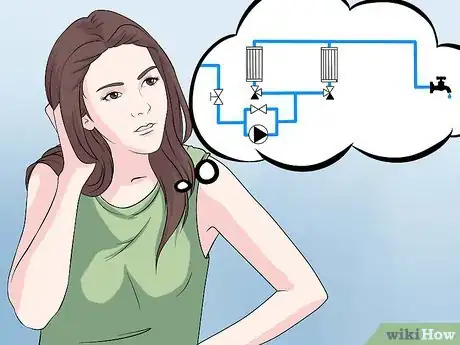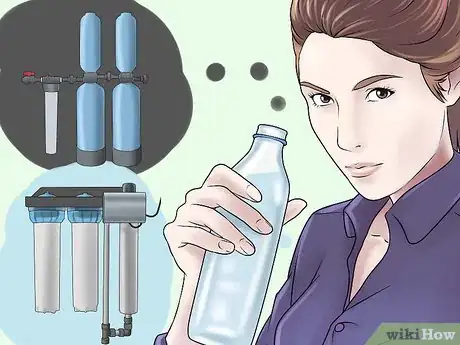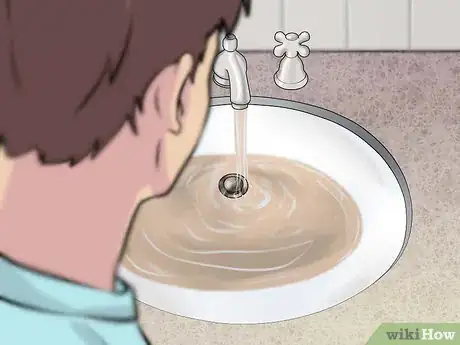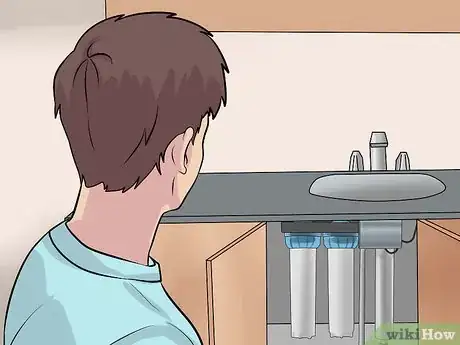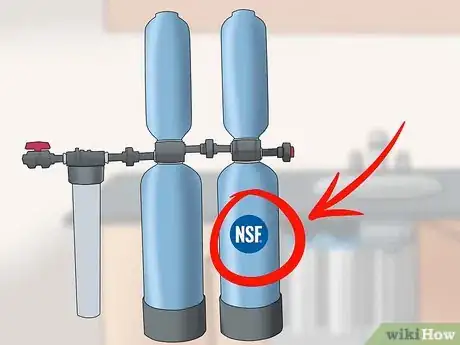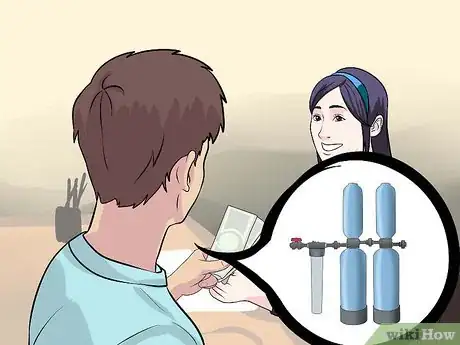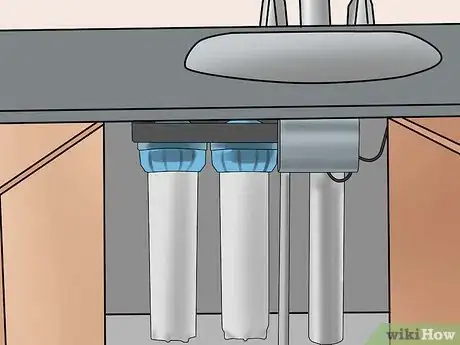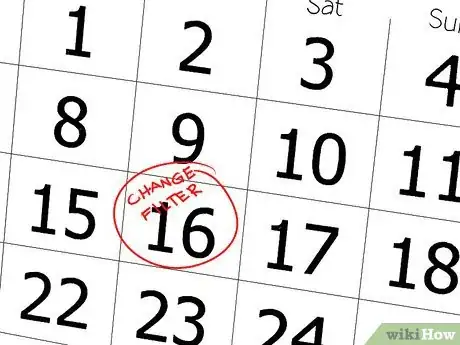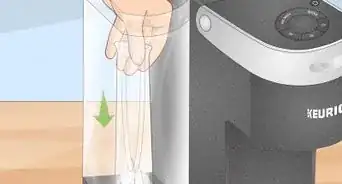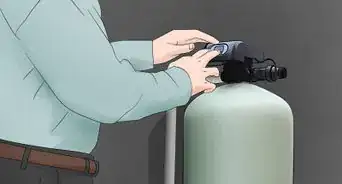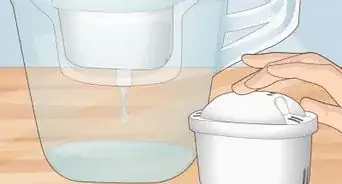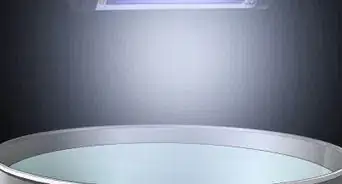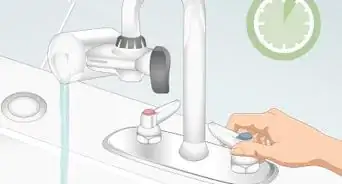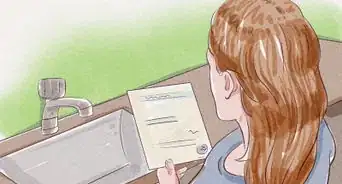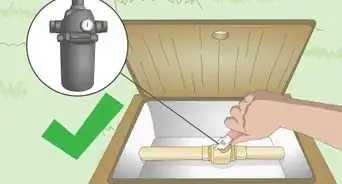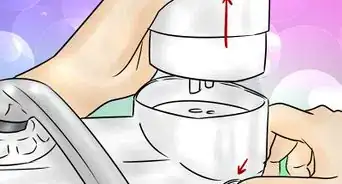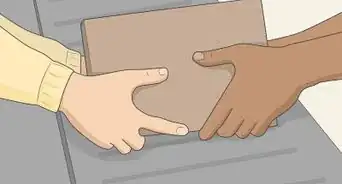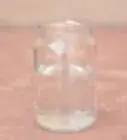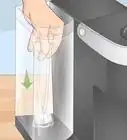wikiHow is a “wiki,” similar to Wikipedia, which means that many of our articles are co-written by multiple authors. To create this article, 41 people, some anonymous, worked to edit and improve it over time.
This article has been viewed 361,246 times.
Learn more...
As concerns over tap water quality continue to grow, manufacturers have introduced many water filtration products to the market. Home water filters remove contaminants, but it can be difficult to know if you need a whole house/point-of-entry (POE) system, a point-of-use (POU) system, or if you don't need one at all. Simply follow this step-by-step guide to find the best home water filter for you.
Steps
Evaluating Your Water Needs
-
1Learn about the POE and POU systems. These are the two types of water filters available for home use. POE systems treat all of the water that enters your home and connects to the water meter or pressurized storage tank.[1] POU systems, however, treat water at the point where it is being consumed, such as a shower head or sink.
- POU filters can be attached externally or can be installed inline.
- POU filters that are installed inline filter all the water passing through a pipe.
-
2Learn about the different types of POU systems available. These types of filters are very common and come in many different formats. POU filters include pitcher filters, personal water bottles with built-in filters, and refrigerator filters. They can be mounted to a faucet, under the sink, or the countertop.[2]
- Smaller carafe-style pitcher filters are good for single people or couples since they only filter a small amount of drinking water at a time.
- Some people do not like filters attached to their countertop or faucet; see which style of POU filter suits you best.
Advertisement -
3Find out what's contaminating your water. This will help you decide if you need to target any specific contaminants when choosing a filtering system. The Environmental Protection Agency (EPA) requires water companies to provide a consumer confidence report (CCR) every year, which analyzes the water quality in your area.[3] The information is available on your local government website or newspaper. If you want to test the water yourself, call the EPA's Safe Drinking Water Hotline (800-426-4791) for the names of state-certified testing labs, which may offer low-cost or free test kits. You can also go to www.epa.gov/safewater/labs to find out more information.
- Visible particles in your water can be rust or sediment, and houses that rely on wells often have bacteria in the water.
- The contaminates your water has will depend on your home.[4]
- You may discover you do not need a water filter at all because your water contains no contaminants.
-
4Evaluate your specific water filtration needs based on the contaminants in your water and the POE and POU systems. If you have a family that drinks several gallons of water a day, a single carafe-style filter would need to constantly be refilled, but a smaller family or couple's water needs would be met by a simple filter.[5]
- If the contaminates in your water are very toxic, you probably want a POE filter to clean all the coming into your house water.
- On the other hand, if you are only filtering the water for taste, a POU filter on the faucet will suffice.
- Research the different options. Consider talking to a Certified Water Treatment Professional.
Buying a Home Water Filter
-
1Pick a filter certified by an American National Standards Institute (ANSI) accredited certification body (examples: NSF or WQA Gold Seal) and is designed to reduce the contaminants found. Now that you know the contaminants found in your water, which will vary, you can buy a filter based that will clean your water effectively. When picking a filter, you may use the WQA or NSF's online database to see if the filters you are considering are certified: https://www.wqa.org/Find-Products#/ or http://info.nsf.org/Certified/dwtu/. Type this URL into your browser's search bar.
- These databases will ask for the manufacturer, brand, and other information to check the safety of the filter.
- Enter all the required information once you navigate to the database.
- Do not pick a filter that isn't certified by an ANSI accredited Certification Body, and do not pick one that will not clean the contaminants found in your water.
-
2Consider all the maintenance costs. Filters need to be periodically replaced to function properly, and the cost of replacing a filter can range from $20 to $400.[6] Whether you're shopping online or in stores, manufacturer's recommendations for when filters need to be changed should be readily available. Choose a filter you can afford to maintain.
-
3Purchase the water filter. You may also want to purchase a warranty and extra filters.
-
4Install the filter according to the manufacturer's instructions. Many POE and POU systems will be easy to install, but you can also hire a professional to install the filter for you. Some POU filters require you to run some water through the filter before consuming the water. Read and follow all of the manufacturer's instructions when installing the filter.
-
5Keep track of when your filter needs to be replaced. If you use the filter and do not change it when it is supposed to be replaced, your water will not be clean anymore. Use a calendar or other reminder to keep track of when you need to change filters.
Community Q&A
-
QuestionWhich type of water filter is best for hard water?
 Community AnswerAny water filter should be sufficient for hard or soft water.
Community AnswerAny water filter should be sufficient for hard or soft water. -
QuestionI got my water tested, but I don't understand the results. Who can I contact to tell me what kind of filtration system I need?
 Community AnswerYou can just go over to the live chat at the SpringWellwater website, and one of their staff members will help you out.
Community AnswerYou can just go over to the live chat at the SpringWellwater website, and one of their staff members will help you out.
Warnings
- When investigating the certification of a particular water filter, be sure to consult third party certification (such as The Water Quality Association or NSF), more than the manufacturer's claims.⧼thumbs_response⧽
References
- ↑ https://www.nsf.org/consumer-resources/articles/home-water-treatment
- ↑ https://www.lowes.com/n/buying-guide/water-filter-buying-guide
- ↑ http://www.consumerreports.org/cro/water-filters/buying-guide.htm
- ↑ https://www.lowes.com/n/buying-guide/water-filter-buying-guide
- ↑ http://www.consumerreports.org/cro/water-filters/buying-guide.htm
- ↑ http://www.consumerreports.org/cro/water-filters/buying-guide.htm
